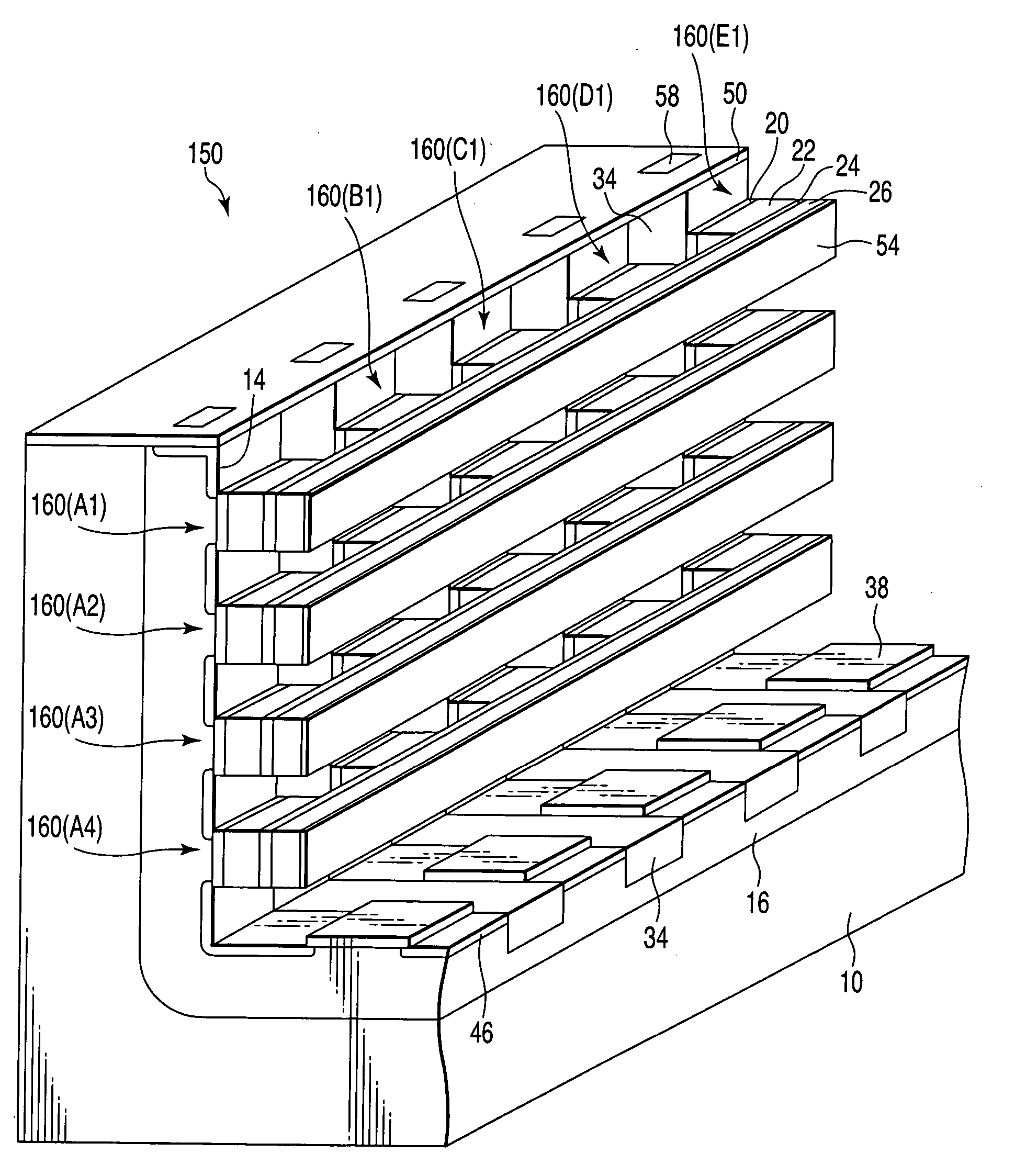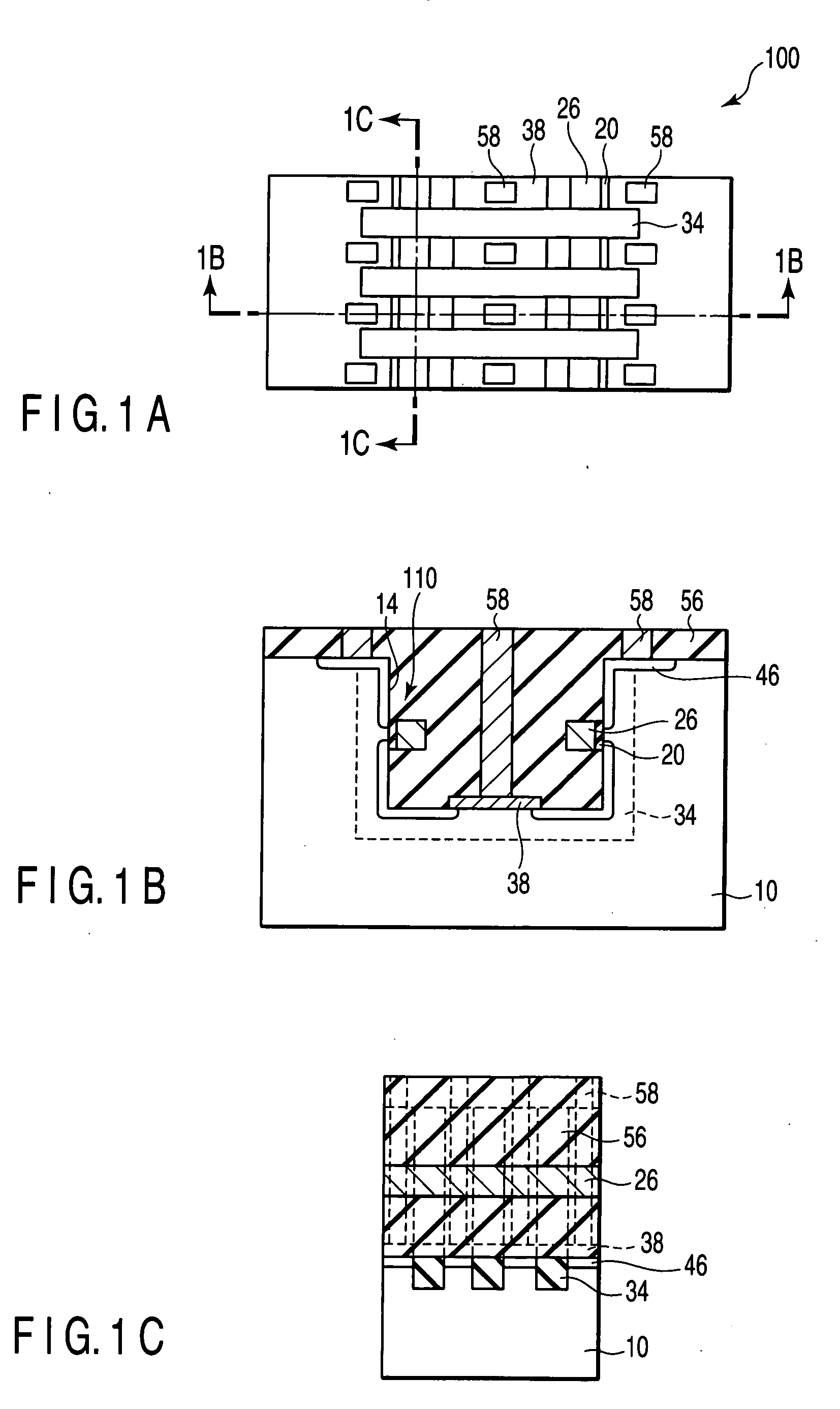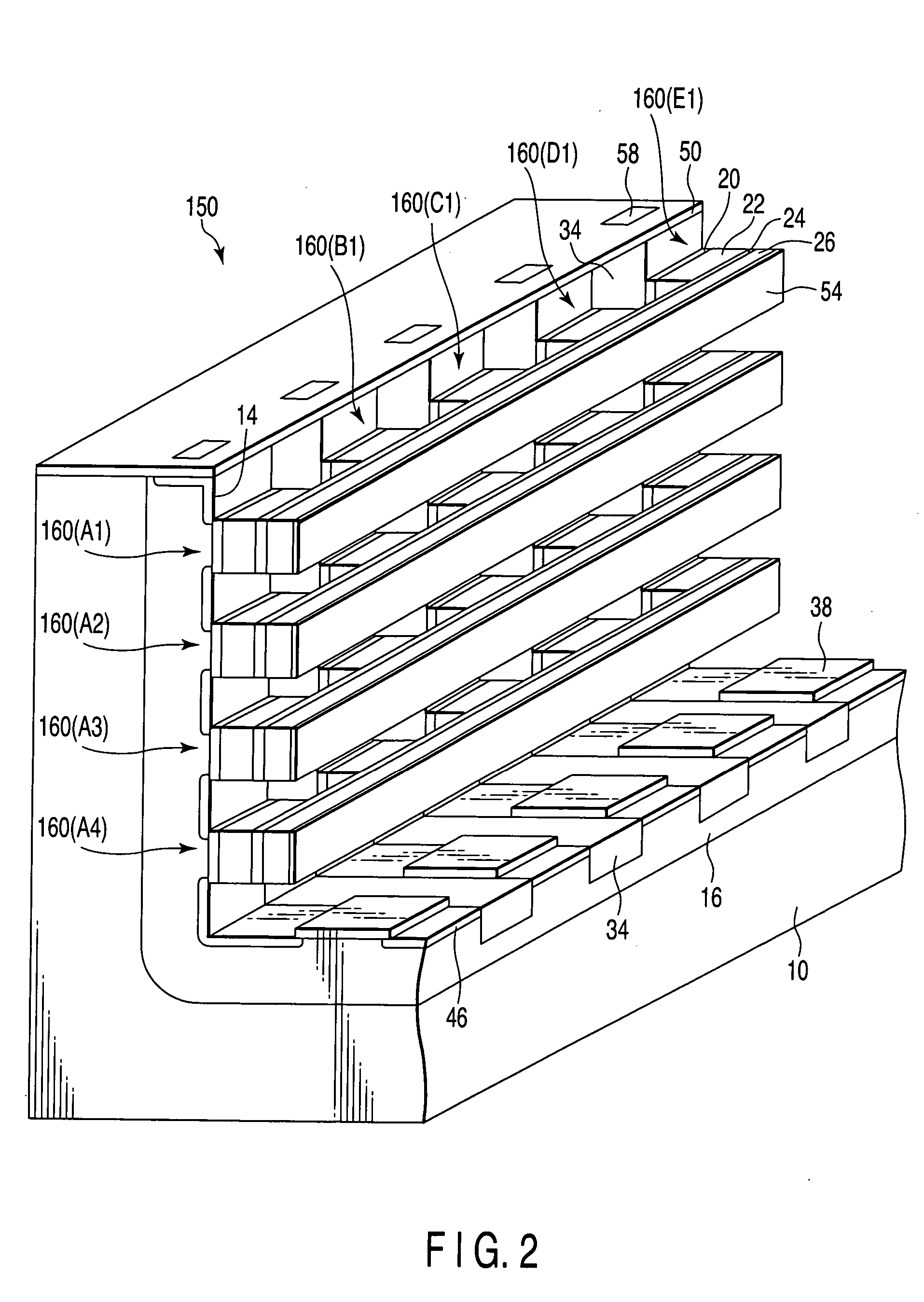Semiconductor device and its manufacturing method
a manufacturing method and semiconductor technology, applied in semiconductor devices, semiconductor/solid-state device details, electrical equipment, etc., can solve the problem of one physical limit, called fine-line
- Summary
- Abstract
- Description
- Claims
- Application Information
AI Technical Summary
Benefits of technology
Problems solved by technology
Method used
Image
Examples
first embodiment
[0037] A first embodiment of the present invention is directed to a three-dimensional semiconductor memory device in which a plurality of thin and long trenches are formed in a semiconductor substrate, and two-dimensionally arranged functional elements such as NAND type memory cells are formed on side faces of both sides.
[0038]FIG. 2 is a perspective diagram illustrating a three-dimensional semiconductor memory device 150 according to the embodiment. The embodiment is a NAND type memory cell array 150 formed by arranging two-dimensional memory cells 160 on a side face of a trench 14. In the drawing, parts are omitted to help to understand a structure of the three-dimensional semiconductor memory device 150. Each memory cell 160 includes a gate insulator 20, a floating gate electrode (FG) 22, an interelectrode insulator 24, and a control gate electrode (CG) 26. The FG's 22 of the memory cells 160 such as memory cells 160(A1) to 160(E1) formed in a horizontal direction of the trench ...
second embodiment
[0090] A second embodiment is a method of processing a side face of a concave portion, such as a trench, in a direction parallel to a bottom face. The embodiment will be described by taking an example in which a trench is formed in a semiconductor substrate or a semiconductor layer and a side face of the trench is processed in a direction parallel to the bottom face, as in the case of the step (6) of the first embodiment. However, the embodiment is not limited to this example. By way of example, a manufacturing process of the embodiment will be described RIE etching with reference to FIGS. 12A, 12B to FIGS. 17A, 17B, and 17C.
[0091] (1) FIG. 12A is a sectional view of the trench 14 vertical to a longitudinal direction showing a film 60 to be processed and a mask insulator 62 are formed on the side face of the trench 14 formed in the silicon substrate 10 by a method, for example, similar to that of the aforementioned steps (5) and (6) of the first embodiment or the like. FIG. 12B is ...
third embodiment
[0106] A third embodiment is directed to a structure of a contact connected to a plurality of wirings formed on a side face a trench and arranged in a vertical direction to be parallel to a bottom face of the trench 14 as in the case of the CG's 26 of the first embodiment, i.e., word lines 26, and its manufacturing method.
[0107]FIG. 18 is a diagram showing a structure of a three-dimensional wiring contact 300 which is an example of the embodiment. FIG. 18 shows a side face of the trench 14 near an end thereof. According to the embodiment, a plurality of contact plugs 70n to 701 are formed to connect corresponding wirings 26n to 261. Positions of the wiring contact plugs 701 to 70n on a surface are changed with respect to depths of the corresponding wirings 261 to 26n. A contact plug 70n correspond to the deepest wiring 26n is positioned closest to an end of the trench, and the larger a distance between the contact plug 70 and the end of the trench, the shallower the wiring 26 becom...
PUM
 Login to View More
Login to View More Abstract
Description
Claims
Application Information
 Login to View More
Login to View More - R&D
- Intellectual Property
- Life Sciences
- Materials
- Tech Scout
- Unparalleled Data Quality
- Higher Quality Content
- 60% Fewer Hallucinations
Browse by: Latest US Patents, China's latest patents, Technical Efficacy Thesaurus, Application Domain, Technology Topic, Popular Technical Reports.
© 2025 PatSnap. All rights reserved.Legal|Privacy policy|Modern Slavery Act Transparency Statement|Sitemap|About US| Contact US: help@patsnap.com



